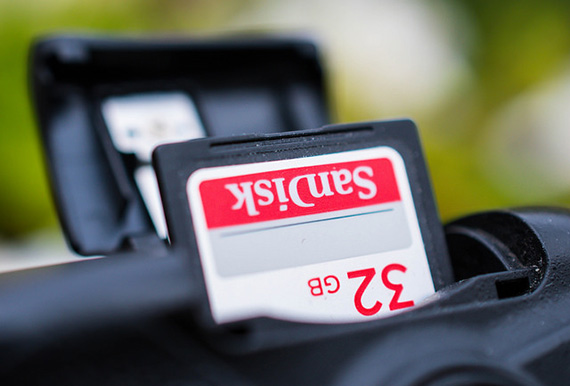It happened to me three weeks into a back packing trip through Southeast Asia. I turned on my camera one morning to look through some of the pictures that I had taken so far, and I saw only an empty memory card. I felt awful. After the initial shock and surprise, I was mad! I didn’t know how all my pictures went missing and at that point would do anything to get them back. This is what started my journey into photo recovery. Although I was able to retrieve most of the pictures using photo recovery software, I also vowed to never let that happen again.

photo by Maria Eklind
Because of this incident, I would like to share with you my three simple techniques to make sure that you will never go through the helplessness of losing your photos.
1. Never use a camera on low battery
Most memory card data loss happens when there is some type of interruption in the read/write process. In real world terms, that means that your camera was not shut down properly. So, when you notice that the battery icon on your camera starts flashing, change the battery immediately. If your camera runs out of batteries while you are taking a photo, the risk of corrupting the memory card is very high. When a memory card gets corrupted, you can no longer access the data saved on it; thus, you lose all the photos saved on the memory card.
Turning off the camera before the photo files are completely saved to the memory card or removing the memory card from the camera while files are being saved on it may also cause corruption of the memory card.
Similarly, accidentally dropping the camera while it is writing to the card can have the same effect. Always use a wrist or neck strap when taking photos!
2. Change memory cards often within the same shoot
As the rule states, do not keep all your eggs in one basket. The same goes for photos. I highly recommended that you bring an extra memory card and change it often during shoots.
Although this doesn’t prevent memory card corruption, it reduces the probability of lost photos, giving you peace of mind.
3. Back up often
Whether you’re shooting videos or taking photos, I always advise creating backups often. You can use a cloud-based service, such as OpenDrive, Dropbox, or SkyDrive, or you can also use hardware like a USB flash drive or an external HDD to create a backup copy of your photos. If you are on a long trip, get in the habit of backing up every day.
Lastly, memory card corruption is sometimes unavoidable. Although you can fix the memory card by reformatting it while inside the camera, this method will also cause you to lose all saved files in the memory card.
Should you unfortunately experience photo loss, you can always try to recover the lost photos using a photo recovery program like Stellar Phoenix Photo Recovery, a trusted application that can recover lost, deleted, or formatted photos and other types of multimedia files.
Best of luck on your photography endeavor. May you avoid photo loss from here moving forward!
About the Author
Cherleen Aquino is a former college instructor and software development technical support engineer. She is currently the editor of Photo Recovery Review blog. After getting married, she decided to become a freelance writer so that she could spend more time with her family. She owns a technology blog and writes reviews for various photo recovery programs and recovery services.
Go to full article: Photo Loss: Tips to Prevent It and Recover Pictures
What are your thoughts on this article? Join the discussion on Facebook
PictureCorrect subscribers can also learn more today with our #1 bestseller: The Photography Tutorial eBook
The post Photo Loss: Tips to Prevent It and Recover Pictures appeared first on PictureCorrect.
from PictureCorrect http://bit.ly/2UBVB7d
via IFTTT






0 kommenttia:
Lähetä kommentti